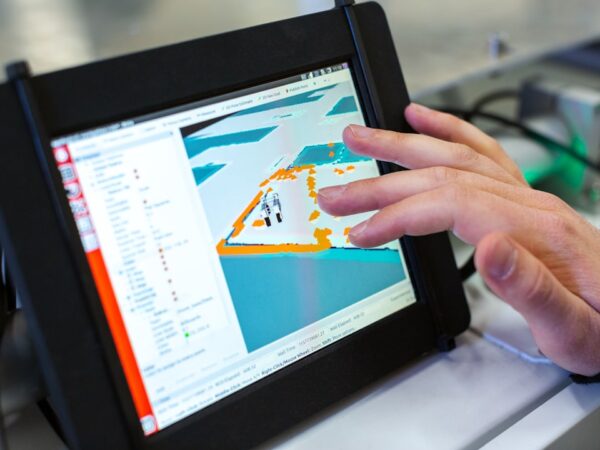
The Ultimate Guide: Choosing the Best Operating System for Software Development
Operating systems are the foundation of any computer system, including those used for software development. An operating system is a software that manages computer hardware and software resources and provides common services for computer programs. It acts as an intermediary between the user and the computer hardware, allowing users to interact with the computer and run applications.
In the context of software development, operating systems play a crucial role in providing an environment for developers to write, test, and deploy their code. They provide the necessary tools and libraries for programming languages, as well as the infrastructure for running and debugging applications. Without an operating system, it would be nearly impossible to develop software efficiently and effectively.
Key Takeaways
- Operating systems are essential for software development.
- There are different types of operating systems, including Windows, macOS, and Linux.
- Factors to consider when choosing an operating system include compatibility, user interface, security, performance, customization, and cost.
- The operating system should be compatible with the programming languages and tools used in software development.
- Popular operating systems for software development include Windows, macOS, and Linux, each with their own pros and cons.
Understanding the Different Types of Operating Systems
There are several types of operating systems available in the market today, each with its own unique features and characteristics. The most popular operating systems for software development include Windows, macOS, and Linux.
Windows is a widely used operating system developed by Microsoft. It is known for its user-friendly interface and compatibility with a wide range of software applications. Windows provides a rich set of development tools and frameworks, making it a popular choice among developers.
macOS, developed by Apple, is another popular operating system used by software developers. It is known for its sleek design and seamless integration with Apple’s hardware and software ecosystem. macOS provides a powerful development environment with tools such as Xcode, which is widely used for developing applications for Apple’s platforms.
Linux is an open-source operating system that has gained popularity among developers due to its flexibility and customization options. It offers a wide range of distributions, each tailored to specific needs and preferences. Linux provides a robust development environment with support for various programming languages and tools.
Despite their differences, all operating systems provide similar functionalities such as file management, process management, memory management, and device management. However, they may differ in terms of user interface, security features, performance, and customization options.
Factors to Consider When Choosing an Operating System for Software Development
When choosing an operating system for software development, there are several factors to consider. These factors can greatly impact the development process and the overall productivity of the development team. Some of the key factors to consider include compatibility with programming languages and tools, user interface and user experience, security features and vulnerabilities, performance and speed, customization and flexibility, and cost and licensing.
Compatibility with programming languages and tools is crucial for developers as it determines the ease of development and the availability of necessary resources. Different operating systems may have varying levels of support for different programming languages and tools. It is important to choose an operating system that provides a seamless development experience for the chosen programming language and toolset.
User interface and user experience are also important considerations as they directly impact the productivity and satisfaction of developers. A well-designed user interface can make it easier for developers to navigate through the development environment and perform tasks efficiently. Additionally, a good user experience can contribute to a positive working environment and enhance collaboration among team members.
Security features and vulnerabilities are critical considerations in software development, especially when dealing with sensitive data or developing applications that require high levels of security. Different operating systems have varying levels of built-in security features and may be more or less susceptible to vulnerabilities. It is important to choose an operating system that provides robust security measures to protect against potential threats.
Performance and speed are crucial factors in software development as they directly impact the efficiency of the development process. An operating system that provides fast and responsive performance can greatly enhance productivity and reduce development time. It is important to choose an operating system that is optimized for performance and can handle resource-intensive tasks efficiently.
Customization and flexibility are important considerations for developers who require a high degree of control over their development environment. Some operating systems offer more customization options than others, allowing developers to tailor their environment to their specific needs and preferences. It is important to choose an operating system that provides the necessary flexibility to accommodate different development workflows and requirements.
Cost and licensing are practical considerations that can greatly impact the budget and resources of a development team. Some operating systems may require a significant investment in terms of licensing fees, while others may be available for free or at a lower cost. It is important to consider the long-term costs and licensing requirements when choosing an operating system for software development.
Compatibility with Programming Languages and Tools
| Programming Language/Tool | Compatibility |
|---|---|
| Java | High |
| Python | High |
| C++ | High |
| JavaScript | High |
| Ruby | Medium |
| PHP | Medium |
| Swift | Low |
| Kotlin | Low |
| Visual Basic | Low |
Compatibility with programming languages and tools is a crucial factor to consider when choosing an operating system for software development. Different programming languages and tools may have varying levels of support on different operating systems. It is important to choose an operating system that provides a seamless development experience for the chosen programming language and toolset.
For example, Windows is known for its wide range of compatibility with programming languages and tools. It supports popular languages such as C++, C#, Java, Python, and more. Additionally, it provides development environments such as Visual Studio, which is widely used by developers for Windows-based applications.
macOS, on the other hand, is known for its strong support for Apple’s programming languages such as Swift and Objective-C. It provides Xcode, a powerful integrated development environment (IDE) that offers a range of tools and features specifically designed for Apple’s platforms.
Linux is known for its flexibility and compatibility with a wide range of programming languages and tools. It supports popular languages such as C, C++, Java, Python, Ruby, and more. Additionally, it provides various development environments such as Eclipse, IntelliJ IDEA, and Visual Studio Code.
When choosing an operating system for software development, it is important to consider the specific requirements of the project and the availability of necessary resources for the chosen programming language and toolset.
User Interface and User Experience
User interface (UI) and user experience (UX) are important considerations in software development as they directly impact the productivity and satisfaction of developers. A well-designed user interface can make it easier for developers to navigate through the development environment and perform tasks efficiently. Additionally, a good user experience can contribute to a positive working environment and enhance collaboration among team members.
Windows is known for its user-friendly interface, with a familiar layout and intuitive navigation. It provides a visually appealing desktop environment with a taskbar, start menu, and customizable icons. Windows also offers various customization options, allowing users to personalize their desktop and optimize their workflow.
macOS is known for its sleek design and seamless integration with Apple’s hardware and software ecosystem. It provides a clean and minimalist interface with a dock, menu bar, and customizable widgets. macOS also offers features such as Mission Control, which allows users to easily switch between applications and workspaces.
Linux offers a wide range of desktop environments, each with its own unique design and features. Popular desktop environments include GNOME, KDE, and XFCE. Linux provides a high degree of customization options, allowing users to tailor their desktop environment to their specific needs and preferences.
When choosing an operating system for software development, it is important to consider the user interface and user experience that best suits the preferences and working style of the development team.
Security Features and Vulnerabilities

Security is a critical consideration in software development, especially when dealing with sensitive data or developing applications that require high levels of security. Different operating systems have varying levels of built-in security features and may be more or less susceptible to vulnerabilities. It is important to choose an operating system that provides robust security measures to protect against potential threats.
Windows has made significant improvements in terms of security over the years. It provides built-in security features such as Windows Defender antivirus, Windows Firewall, and BitLocker encryption. Additionally, Windows regularly releases security updates to address vulnerabilities and protect against emerging threats.
macOS is known for its strong security features, thanks to Apple’s focus on privacy and data protection. It provides built-in security features such as Gatekeeper, which prevents the execution of malicious software, and FileVault, which encrypts the user’s data. Additionally, macOS benefits from Apple’s closed ecosystem, which reduces the risk of malware and other security threats.
Linux is known for its strong security capabilities, thanks to its open-source nature and active community of developers. It benefits from regular security updates and patches, as well as the ability to customize and harden the operating system to meet specific security requirements. Additionally, Linux provides built-in security features such as SELinux (Security-Enhanced Linux) and AppArmor, which provide mandatory access control and application sandboxing.
When choosing an operating system for software development, it is important to consider the security features and vulnerabilities that may impact the confidentiality, integrity, and availability of the developed software.
Performance and Speed
Performance and speed are crucial factors in software development as they directly impact the efficiency of the development process. An operating system that provides fast and responsive performance can greatly enhance productivity and reduce development time. It is important to choose an operating system that is optimized for performance and can handle resource-intensive tasks efficiently.
Windows is known for its strong performance capabilities, especially in terms of gaming and multimedia applications. It provides efficient memory management and scheduling algorithms, allowing applications to run smoothly even under heavy load. Additionally, Windows benefits from a large user base and extensive hardware support, ensuring compatibility with a wide range of devices.
macOS is known for its smooth and responsive performance, thanks to Apple’s tight integration of hardware and software. It provides efficient memory management and power management algorithms, allowing applications to run efficiently on Apple’s platforms. Additionally, macOS benefits from Apple’s optimization efforts, resulting in a streamlined user experience.
Linux is known for its efficient resource management and scalability. It provides a lightweight and modular architecture, allowing users to customize the operating system to their specific needs and optimize performance. Additionally, Linux benefits from its open-source nature, which allows developers to contribute to performance improvements and optimizations.
When choosing an operating system for software development, it is important to consider the performance and speed requirements of the project and the ability of the operating system to handle resource-intensive tasks efficiently.
Customization and Flexibility
Customization and flexibility are important considerations for developers who require a high degree of control over their development environment. Some operating systems offer more customization options than others, allowing developers to tailor their environment to their specific needs and preferences. It is important to choose an operating system that provides the necessary flexibility to accommodate different development workflows and requirements.
Windows provides a high degree of customization options, allowing users to personalize their desktop environment, change system settings, and customize the appearance of applications. Additionally, Windows supports a wide range of hardware devices and peripherals, ensuring compatibility with different development setups.
macOS offers a moderate level of customization options, allowing users to personalize their desktop environment, change system settings, and customize the appearance of applications. Additionally, macOS provides a seamless integration with Apple’s hardware and software ecosystem, allowing developers to take advantage of Apple’s tools and frameworks.
Linux offers a high degree of customization options, thanks to its open-source nature and active community of developers. Users can choose from a wide range of distributions and desktop environments, each with its own unique design and features. Additionally, Linux allows users to customize various aspects of the operating system, including the kernel, desktop environment, and software packages.
When choosing an operating system for software development, it is important to consider the customization and flexibility options that best suit the preferences and requirements of the development team.
Cost and Licensing
Cost and licensing are practical considerations that can greatly impact the budget and resources of a development team. Some operating systems may require a significant investment in terms of licensing fees, while others may be available for free or at a lower cost. It is important to consider the long-term costs and licensing requirements when choosing an operating system for software development.
Windows is a commercial operating system that requires a license for use. The cost of Windows licenses can vary depending on the edition and version. Additionally, Windows may require additional licenses for certain development tools and frameworks.
macOS is also a commercial operating system that is only available for use on Apple’s hardware. The cost of macOS is included in the purchase price of Apple’s devices. However, macOS may require additional licenses for certain development tools and frameworks.
Linux, on the other hand, is an open-source operating system that is available for free. Users can download and install Linux distributions without any licensing fees. Additionally, Linux provides a wide range of free and open-source development tools and frameworks.
When choosing an operating system for software development, it is important to consider the cost and licensing requirements that best fit the budget and resources of the development team.
Popular Operating Systems for Software Development and Their Pros and Cons
Windows is a popular choice among developers due to its wide range of compatibility with programming languages and tools. It provides a user-friendly interface, strong performance capabilities, and extensive hardware support. However, Windows may be more susceptible to security vulnerabilities and may require additional licensing fees for certain development tools.
macOS is another popular choice among developers, especially those targeting Apple’s platforms. It provides a sleek design, seamless integration with Apple’s hardware and software ecosystem, and strong security features. However, macOS is only available for use on Apple’s hardware and may require additional licensing fees for certain development tools.
Linux is a popular choice among developers who value customization and flexibility. It offers a wide range of distributions and desktop environments, as well as strong security capabilities. Additionally, Linux is available for free and provides extensive support for programming languages and tools. However, Linux may require more technical expertise to set up and configure, and may have limited compatibility with certain hardware devices.
When choosing an operating system for software development, it is important to consider the specific requirements and preferences of the development team, as well as the pros and cons of each operating system.
Operating systems play a crucial role in software development by providing an environment for developers to write, test, and deploy their code. When choosing an operating system for software development, it is important to consider factors such as compatibility with programming languages and tools, user interface and user experience, security features and vulnerabilities, performance and speed, customization and flexibility, and cost and licensing.
Different operating systems have their own unique features and characteristics. Windows is known for its wide range of compatibility with programming languages and tools, as well as its user-friendly interface. macOS offers a sleek design, seamless integration with Apple’s ecosystem, and strong security features. Linux provides customization options, flexibility, and strong security capabilities.
Ultimately, the choice of operating system for software development depends on the specific requirements and preferences of the development team. It is important to carefully evaluate the pros and cons of each operating system and choose the one that best fits the needs of the project.
FAQs
What is an operating system?
An operating system (OS) is a software that manages computer hardware and software resources and provides common services for computer programs.
Why is the choice of OS important for software development?
The choice of OS is important for software development because it affects the development environment, tools, and libraries available to developers, as well as the performance and stability of the software being developed.
What are some popular OS choices for software development?
Some popular OS choices for software development include Windows, macOS, and Linux.
What are the advantages of using Windows for software development?
Advantages of using Windows for software development include a large user base, a wide range of development tools and libraries, and compatibility with many software applications.
What are the advantages of using macOS for software development?
Advantages of using macOS for software development include a user-friendly interface, a Unix-based command line interface, and compatibility with many open-source development tools.
What are the advantages of using Linux for software development?
Advantages of using Linux for software development include a wide range of development tools and libraries, a Unix-based command line interface, and the ability to customize the OS to suit specific development needs.
Which OS is the best for software development?
There is no one-size-fits-all answer to this question as the best OS for software development depends on individual preferences and project requirements. However, Windows, macOS, and Linux are all popular choices among developers.


















